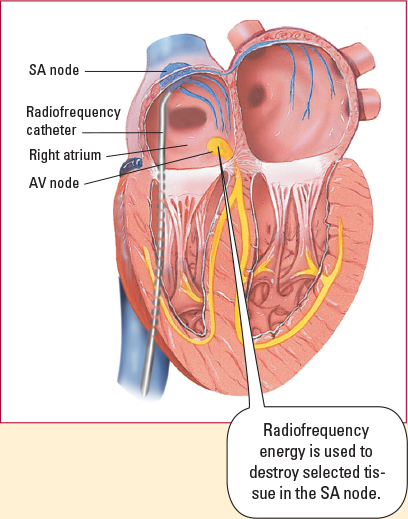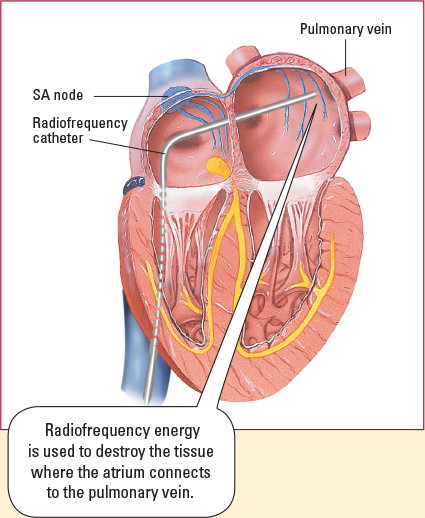In radiofrequency ablation, special catheters are inserted in a vein and advanced to the heart. After the type and source of the arrhythmia is identified, radiofrequency energy is used to either (1) ablate focal tissue or (2) interrupt or isolate a reentry path or circuit. These illustrations demonstrate two types of catheter ablation. | Sinus node modification | Atrial fibrillation ablation | | A focal arrhythmia, inappropriate sinus tachycardia, is characterized by a sinus rate out of proportion to physiologic need. It is treated with a sinus node modification in which tissue in the sinus node is destroyed until the desired heart rate is achieved.

| In most patients with atrial fibrillation, the tissue inside the pulmonary veins is the source of the arrhythmia. Ablation within the pulmonary veins would cause pulmonary vein stenosis. Therefore, radiofrequency energy is used to destroy the tissue encircling the pulmonary veins to block the path of the abnormal impulses from exiting the pulmonary veins and traveling into the atria and ventricles. Hence, this procedure is commonly referred to as pulmonary vein isolation. Other sites within the right and left atria can also targeted. Although some believe that atrial fibrillation may be because of many reentrant circuits, the mechanism is still not understood.

|
|
|

